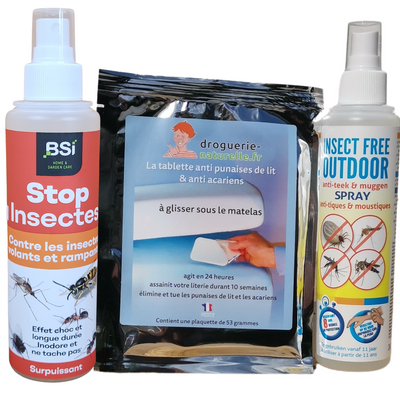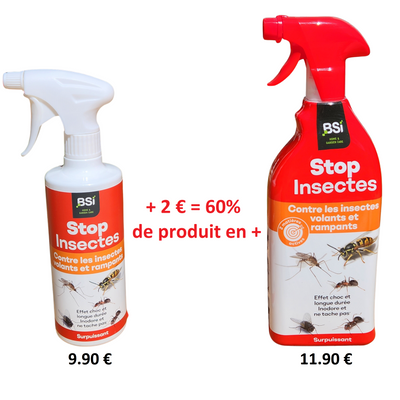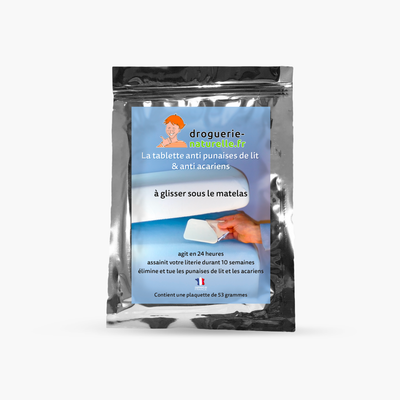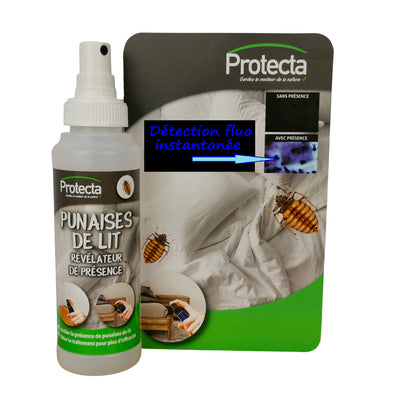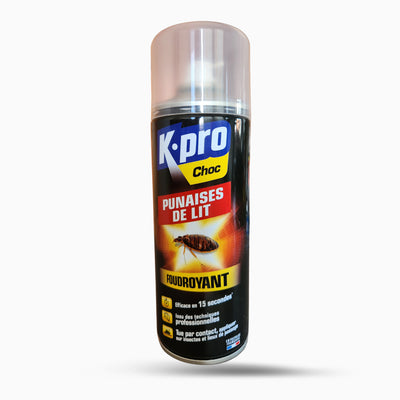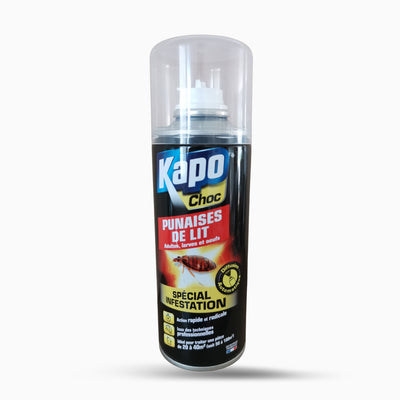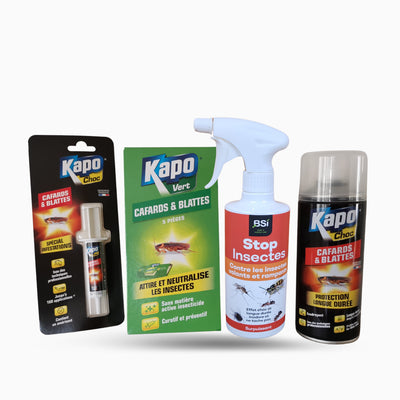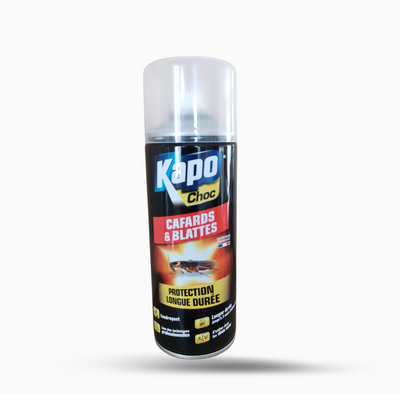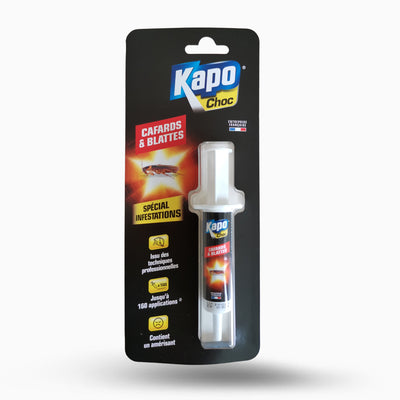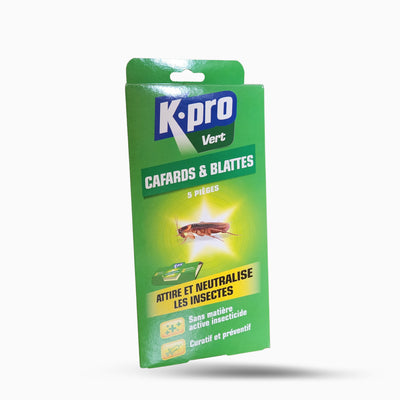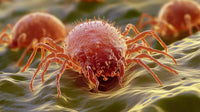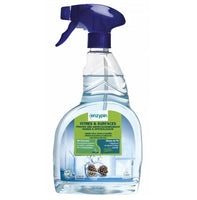There DENGUE , the CHIKUNGUNYA and the ZIKA are infectious tropical diseases NOW present in France . Many cases of new contaminations are reported each month. The tiger mosquito, a vector of viruses , is also present throughout Europe. This cocktail of viruses and tiger mosquitoes can be explosive. What prevention? to protect yourself from these viruses? What are the different symptoms ? What are risks to human health ? How long does the illness last?
This article answers these questions:
- Dengue fever in France
- Dengue, Chikungunya and Zika: Symptoms and Differences
- To protect against bites, Icardine
- Maps of the presence of the tiger mosquito in France
- How to recognize a tiger mosquito
- How to recognize tiger mosquito bites?
- To soothe the itching of bites
- A huge scandal about tiger mosquitoes
Dengue fever in France
Dengue fever is the most widespread infestation in Europe and France. The increase in cases imported by people infected during travel is very worrying. Let's take the figures for France ( Source santepubliquefrance.fr )

New cases of contamination reported in France in 5 months
For the period from January 1 to June 4, 2024, Public Health France recorded 2,583 cases of dengue fever imported by infected travelers returning from trips, often in South Asia .
For the same period, only 7 cases of chikungunya virus , and 2 cases of Zika virus have been reported. ( source: santepubliquefrance.fr )
Dengue, Chikungunya and Zika: Symptoms and Differences
Here are the symptoms that everyone should know and be able to identify in order to make the decision to consult their GP as soon as possible. A Dengue, Chikungunya or Zika infection should not be confused with the flu . These are infections that must be declared on the ARS website .
Dengue fever:
Dengue fever is a growing global public health problem, with outbreaks capable of overwhelming health systems and disrupting economies ( Source The Lancet ). By far the most common tropical disease in Europe.
Symptoms
After 4 to 10 days of incubation , it occurs suddenly like the flu. Depending on the person, it can be mild symptoms or a sudden onset of a high fever above 38.5°, headaches , muscle pain and weakness , joint and lower back pain, nausea, vomiting, refusal of food. General dejection . Possibly, swelling of the lymph node, and slowing of the heart rate.
Health hazard
( source Institut Pasteur ): Like the flu, dengue fever is most often harmless for people without comorbidities. But There are two severe forms of dengue fever which usually appear after the initial fever has disappeared and which can have complications potentially fatal.
- Dengue hemorrhagic fever accounts for about 1% of cases worldwide. Severe abdominal pain, persistent vomiting, and multiple hemorrhages, particularly gastrointestinal, cutaneous and cerebral. In children under fifteen years of age In particular, a state of hypovolemic shock (a state of shock caused by a significant drop in total blood volume) may set in. It is characterized by cooling, clammy skin and an imperceptible pulse indicating circulatory failure which can, without perfusion, lead to the death of the patient.
- Dengue shock syndrome is fatal . It is characterized by circulatory collapse, i.e. a profound failure of the circulatory function which results, for example, in a collapse of blood pressure, extreme tachycardia, pallor sometimes associated with cyanosis, and multi-organ failure, i.e. rapid deterioration of one or more organs or viscera.
How long does Dengue fever last?
Symptoms persist for two to seven days and the health of the infected person generally progresses favorably. Convalescence can extend over about two weeks. “Classic” dengue, although very disabling, is not considered a serious disease.
Is dengue fever contagious?
Dengue fever is not contagious from human to human, it is transmitted through the tiger mosquito bite infected which serves as vector . It is a vector-borne disease .
What are the treatments?
It does not exist no specific treatment against dengue fever. The symptoms of the disease are treated with painkillers that have an anti-fever action, and that reduce or eliminate pain by blocking the pain signal that is transmitted to the brain. It therefore does not treat the cause. Be careful, non-steroidal anti-inflammatory drugs should be avoided, because they can increase the risk of bleeding. In all cases, it is the doctor who will prescribe the appropriate treatment.
Is there a vaccine?
Yes, but not for everyone . There is a preventive vaccine, Dengvaxia®, administered in three doses spaced six months apart, but it is reserved for very specific people: people aged 9 to 45, previously infected with the virus and living in an endemic area.
Good to know: A person infected a second time is at greater risk of developing severe dengue fever .
Chikungunya:
Still very rare in Metropolitan France , we are very far from a chikungunya epidemic .
Symptoms
Similar to those of Dengue and Zika.
Health hazard
Chikungunya is usually harmless to people without comorbidities, such as influenza. Pregnant women should still be very careful, as there is a risk from six months of pregnancy to seven days after delivery.
How long does Chikungunya last?
As with Dengue and Zika, symptoms can persist for 8 to 10 days.
Is Chikungunya contagious?
Chikungunya is not not contagious from human to human , it is transmitted through the bite of an infected tiger mosquito which acts like a virus syringe. It is a vector-borne disease .
What are the treatments?
As with Dengue and Zika, there is no specific treatment.
Is there a vaccine?
It's very recent, an article from Le Monde dated 10/11/2023 reports a first vaccine against Chikungunya approved in the United States. Developed by the European group Valneva, the vaccine is authorized for people aged 18 and over who are at increased risk of being exposed to the virus. An application for authorization has been filed with the European Medicines Agency.
Zika
Symptoms
Very similar to those of dengue or chikungunya: headaches , rashes, fatigue, muscle and joint pain. Rash with or without fever, inflammation of the eyes in conjunctivitis.
Health hazard:
This infection most often remains benign, but there are two possible complications.
- The real danger is for the fetus. A contamination of the Zika virus disease during pregnancy could cause microcephaly , which is responsible for irreversible mental retardation.
- The Zika virus is also transmitted sexually (up to almost a year after infection), it will therefore be essential to have safe sex during this period.
How long does Zika last?
Signs of the disease can persist for 8 to 10 days and sexual transmission can last up to a year.
Is Zika contagious?
Yes, although it is a vector-borne disease, The virus is also transmitted from human to human through sexual contact for up to one year after infection.
What are the treatments?
As with Dengue and Chikungunya, there is no specific treatment.
Is there a vaccine?
There is currently no vaccine against the Zika virus.
What is a vector-borne disease?
It is a disease that has need a vector to transmit from one individual to another . It is not not contagious like the flu or Covid. Here, it is the tiger mosquito who will be the mosquito vector . Initially, he himself will be contaminated by this virus infection by biting an animal or a person who is already sick and carrying the dengue, chikungunya or Zika virus. That's it, the tiger mosquito is now carrying the disease, and like a real virus distributor, during the four to six weeks of his life, he will transmit the disease to every human or animal that it will sting. Let us specify here that it is the female mosquito that stings us. Females need the proteins in our blood to ensure the development of eggs.
Good to know:
Some people infected with the virus are asymptomatic. That is, they have no symptoms of infection or illness. However, they are carriers of the virus, and if a tiger mosquito bites them, the mosquito will be infected with the virus.
The Ministry of Health's surveillance system
The goal of the Ministry of Health is to avoid the appearance of the mosquito proliferation , and of contagion centers in Europe which could become endemic areas . Areas of indigenous transmission where tiger mosquitoes not yet carrying the viruses would become infected by biting individuals who are already infected, which would make them carriers of dengue, chikungunya or Zika. For the moment, cases of contamination in Metropolitan France are still overwhelmingly imported diseases , i.e. from patients who have been infected while traveling in countries where the disease is already endemic. To prevent the infection from being established in France, three axes are favored:
- There detection of the presence of tiger mosquitoes.
- There surveillance of human cases of diseases . To prevent tiger mosquitoes from contaminating themselves by biting this infected person, disinfestation is organized within a radius of 150 meters around them.
- A information for citizens living in an area where cases of dengue, chikungunya or Zika are revealed.
Tiger mosquito, a very invasive insect
During his life, The female tiger mosquito lays 750 black, sticky eggs , less than a millimeter in size, which she deposits in clusters as close as possible to the water, in wet areas, old tires, flower pot cups, basins, water reserve containers, plastic sheeting, edges of ponds. At the first rain, these eggs will be submerged, and with the first heat They will develop in four to eight days to give birth to mosquitoes. This is the aquatic phase , the transformation of the egg into a larva takes place underwater.
Development of mosquito larvae underwater
In a natural environment such as rivers or ponds, these larvae are devoured by frogs, dragonflies, fish, newts, birds. In an old tire or a basin, there is no predators , and 100% of the larvae will become biting mosquitoes, which promotes the ultra fast multiplication of these mosquitoes. This aquatic phase is essential for the birth of mosquitoes, and for this mosquito control It is very important not to offer them these wetlands. Remove the cups from under the flower pots, cover the water trays, and hunt down containers that could fill with water.
Some people get bitten more than others.
Sure, mosquitoes love me, if there is only one, it is for me. All the reasons for this inequality in the face of mosquito bites , I would even say mosquito bites, are not explained.
What we know:
- Heat attracts mosquitoes: fever, sweating, sweating. The temperature of pregnant women increases by 0.5° during the entire pregnancy.
- Odors . Mosquitoes have a very efficient olfactory system, they are more or less attracted by certain bacteria present on the skin, but also by certain perfumes, shampoos or shower gels.
- Dark colours attract them , so opt for white and loose clothing. Mosquitoes are able to bite through fabrics.
- Drinking alcohol also appears to attract mosquitoes.
To protect against bites, Icardine
We will have to get used to living with this permanent risk of contamination . Dengue, Chikungunya and Zika should no longer be considered tropical diseases, but rather diseases that have become indigenous.
To avoid being contaminated, you should not get stung.
INSECT FREE, a powerful repellent
In all circumstances, during the day, indoors, outdoors, you have to repel these mosquitoes to avoid being bitten. Icardine is a very effective repellent, recommended by the WHO even for tropical countries. It repels insects for 8 hours. It is marketed under the brand name INSECT FREE . It is not an insecticide , so it does not have the toxicity of insecticides , it is a repellent . No insect will land on your skin for 8 hours. This is valid against mosquitoes , but also against ticks , horseflies , spiders , wasps . This same product is also approved for the protection of horses. Sold in 200 ml to take it everywhere, in 500 ml to spray on yourself in the garden, around the swimming pool, and in an economical 2.5 L refill. Does not stain, does not stick, practically odorless.
In the house, day and night
To read quietly at home, and above all to have peaceful nights, simply this K.PRO diffuser that plugs into an electrical outlet . After a few minutes, there is no longer any kind of mosquito in the room. I use it every summer night, I guarantee its effectiveness. No smell, no discomfort.
In case of strong presence of mosquitoes
For heavily infested areas , when there are mosquitoes on the walls, ceiling, curtains, in addition to the electric diffuser, my recommendation is to impregnate these surfaces with a spray of BSI STOP Insects . It is a product that does not stain, without any odor. after drying, it is undetectable . It is very effective to kill any cold-blooded animal, bedbugs, cockroaches, flies, fleas, spiders, mites, and of course mosquitoes. Any insect that walks on an impregnated surface will be poisoned . The duration of action of BSI STOP Insects is 8 weeks at least more than 4 months for darker areas (the product is naturally degraded by ultraviolet rays). As this product is very effective in destroying all insects, it should not be used outdoors to avoid killing bees, ladybugs and butterflies.
Mosquito nets are also an effective means of protection. The disadvantage is the implementation which can be complicated.
Maps of the presence of the tiger mosquito in France

78 departments infested by tiger mosquitoes in 2024
It started with the southern France , and now the same is true for all of Europe, and this will not improve with global warming. If a tiger mosquito bites a human carrying dengue, chikungunya or Zika, it will transmit this tropical disease to the next human it bites. The transmission of these infectious diseases can quickly turn into an epidemic. It is absolutely necessary to avoid indigenous transmissions of Dengue, Chikungunya and Zika by tiger mosquitoes that would become contaminated by biting individuals carrying these viruses.
Strict health surveillance measures have been put in place in all regions of the territory by the State services. From May 1 to November 30 of each year, during the mosquito activity period, any observation of a source of contamination must be the subject of a mosquito report by a declaration to the Regional Health Agency (ARS), it is mandatory. Contaminated subjects must be treated immediately, and a mosquito control treatment will be systematically carried out on an area with a radius of 150 m around the source of infection, because tiger mosquitoes never move more than 150 m.
How to recognize a tiger mosquito
( source ANSET )
- THE Tiger mosquito Aedes albopictus is of small size , +/- 5 millimeters,
- striped white and black. On the legs, five white stripes. On the thorax, a white line along the entire length. Also white stripes under the body.
- it is completely silent (no zzzzzzzzzzzz to alert you)
- Unlike the common mosquito which bites more at night, it bites more during the day, especially in the morning and evening.
- it is able to sting through clothing

How to recognize tiger mosquito bites?
The itching is immediate and persists for several minutes after a mosquito bite . It causes a pimple of 5 millimeters to 2 centimeters in diameter to appear, in the shape of a flat blister, hard, hot and painful like a blister. Its color is lighter than the color of the skin, with a red halo more or less wide depending on the person. The itching can reappear after several days in the event of a change in temperature, for example after a shower.
To soothe the itching of bites
Mosquito bites are unbearable. Above all, do not scratch yourself, it would be worse.
Two grandmother's recipes that work very well:
- Alum stone. Choose a real alum stone, you know, those translucent stones that men used to rub on their faces after shaving with a straight razor. Alum is a natural salt that is hemostatic, disinfectant, and stops the itching of insect bites. Run the stone under cool water, lightly rub the bites, and let it dry. The itching will fade in a few moments.
- Wine or cider vinegar. Apply directly to the bites, let it dry, it's magic. This also applies to any itchy skin or scalp. The smell is very volatile.
A huge scandal about tiger mosquitoes
Of course, and since these mosquitoes breed in water, you must cover the rainwater collector in the garden, do not leave stagnant water at the bottom of a basin or flower pot saucers. Regarding flower pot saucers outdoors, I recommend that you remove them. They attract cockroaches, and encourage mosquitoes to breed.
Once we have taken these preventive measures, there remains a huge problem regarding standing water on flat roofs concrete. These flat roofs are everywhere, and fill with stagnant water every time it rains. The most incredible thing is that It is legally indisputable . I wrote an article dedicated to this improbable phenomenon. "Tiger mosquitoes, a scandalous law". (soon online)



